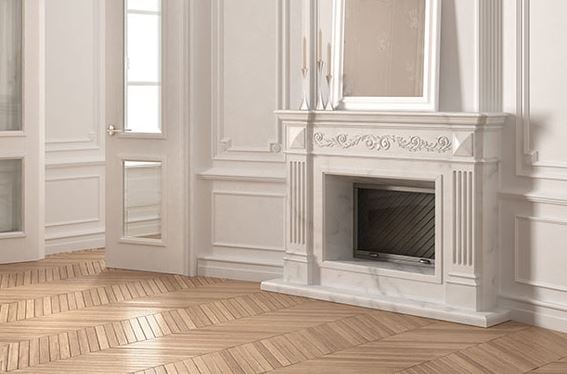

In April 2018, the U.S. Census Bureau announced that national vacancy rates in the first quarter of 2018were seven percent for rental housing and 1.5 percent for homeowner housing. In total, there were an estimated 17,161 vacant housing units in the United States for Q1 2018.
While there is ample opportunity for retail brokers and agents to educate their clients in the vacant dwelling space, they may feel that the coverage is difficult to sell due to the temporary nature of the units, corresponding insurance and a client’s lack of knowledge about vacant dwellings.
Yet, having an understanding of Vacant Dwelling insurance, as well as the ability to offer coverage in the event a client has vacant property, can be essential for brokers in maintaining client relationships.
Distinguishing a Vacant Dwelling
For brokers and agents, it is important to understand what type of property constitutes a vacant dwelling.
Examples of vacant dwellings could be when an individual is moving locations and is awaiting to sell their old housing unit or when a person inherits a family member’s home after they pass away. Additionally, a growing trend has been when individuals invest in a vacant property with plans to resell the unit for profit.
“People continue investing in real estate, especially in good economic times,” said Tyson Peel, National Property & Casualty Manager, Burns & Wilcox Canada, Toronto, Ontario. “This is especially popular in major Canadian cities, where the property values have been growing astronomically, rewarding investors with quick returns on their investments. Protecting real estate assets with Vacant Dwelling insurance is a prudent decision and eliminates numerous risks.”
From a retailer standpoint, being well-informed about a property is essential in understanding what coverage an individual needs. For example, brokers need to determine for how long a building has been vacant, as insurance will often not cover units that have been vacant for thirty days or more.
“A few questions I like to ask include what are the future goals for the vacant dwelling? Is a person planning on selling the unit and, if so, how quickly are they trying to sell?” said Anella Niewenhous, Underwriting Director, Personal Insurance, Burns & Wilcox, Morehead City, North Carolina.
Yet, the most important thing for a broker to do is to actually get boots on the ground and properly examine the property.
“Viewing a prospective vacant dwelling is vital, as a broker or agent needs to fully understand the physical aspects of the property,” said Jacque Dungan, Underwriting Manager, Burns & Wilcox, St. Louis, Missouri. “Upon inspection, a broker may find that a property is too physically damaged or run-down to even be considered for insurance.”
Vacant Dwellings produce risk, even in the short-term
Brokers may find that individuals feel they do not need Vacant Dwelling insurance, as they are planning on selling the property as soon as possible. Yet, vacant dwelling housing units are at risk from numerous exposures.
In an April 2018 National Fire Protection Association (NFPA) report, it was found that from 2011-2015, the U.S. fire department responded to an estimated average of 30,200 structure fires per year in vacant properties, which includes commercial properties. In sum, these fires resulted in an average of $710 million in direct property damage per year.
Vacant dwellings also inherently present themselves as easy targets for burglaries or vandalism. In fact, the same NFPA report found that half of vacant building fires were intentionally set compared to 10% of all structure fires.
“We have found that appliances such as air conditioning units and ceiling fans, as well as any copper or building supplies left at a vacant dwelling, have frequently been targeted by burglars,” said Niewenhous.
While basic vacant dwelling insurance often covers for major losses such as wind, newer houses that have been updated with wiring, plumbing, heating, or a new roof can often apply for additional forms of coverage. In addition, more and more markets are beginning to offer broad-form coverage that extends beyond basic risks, such as water or fire damage.
Furthermore, location plays in an important role in determining the specific risks a vacant dwelling may encounter.
“In areas with lower temperatures, vacant dwellings are at a risk from winter perils, especially properties that leave the water on,” said Peel. “These properties may require a certain temperature to be kept at the unit in order to prevent frozen pipes that may result in water damage.”
Changes in the Vacant Dwelling Canadian Market
There have been several changes in Vacant Dwelling insurance in Canada due to an increased market involvement from insurance companies.
“Vandalism and malicious acts are now starting to be included in all Vacant Dwelling insurance policies,” said Peel. “This is a big change as those perils were traditionally not covered.”
The additional coverage for vandalism and malicious acts has only been in effect in Canada for a short time, usually with a sub-limit in coverage. Recently a new market has provided coverage at fully policy limits. The change was primarily driven by the fact that vandalism has not generated a lot of claims in the United States.
When a broker’s client changes occupancy, it is prudent for brokers to be able to offer a solution for vacant dwellings in order to maintain a client as well as meet their needs.
